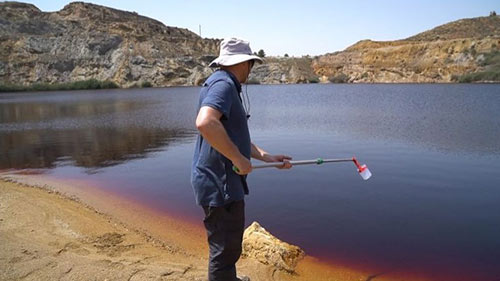Soil contamination from industrial activities is a significant problem across Europe, affecting not only the soil, but also surface water, ground water, air quality and human health. The SoilTakeCare project, conducted across three sites in the regions of Occitanie in France, Murcia in Spain and Centro in Portugal, developed innovative, low-cost diagnostic and monitoring tools, and assessed alternative soil remediation techniques.
SoilTakeCare – Low-cost solutions to diagnose and clean up soil contamination
- 05 February 2020
The work of SoilTakeCare has resulted in reduced time loss and cost saving using novel and low-cost strategies for the assessment (mapping/monitoring), clean-up (remediation/bioremediation) and management (socioeconomic) of industrial polluted sites (Estarreja, Portugal; Cartagena, Spain and Viviez, France).
The project also looked at soil contamination from a human perspective. Inhalation and ingestion risks of contaminants were quantified for both adults and children, and socioeconomic surveys were carried out in the three project locations to better understand how polluted soil affects people, social structure and the local economy.
Overall, the project results provided insights for proposing new strategies for land monitoring, management and remediation in contaminated areas across Europe, improving the environment and quality of life.
Reducing the cost of mapping and monitoring
A key element of addressing soil contamination is the need for accurate mapping and monitoring tools. The SoilTakeCare project developed three different approaches to drastically reduce the cost of this kind of monitoring.
The first approach focused on reducing the cost of the active sensors in particle traps that monitor particles with a diameter between 2.5 microns and 10 microns. Here, the project developed new sensors that cost around a third of those currently available on the market. The team also used a GPS receiver to map the metal content of contaminated mining areas, simply by measuring power variations of GPS waves reflected on these areas.
Secondly, the project used plants such as Tillandsia usneoides, also called Spanish moss, as biosensors for local monitoring. These plants are one of the most commonly used organisms for biomonitoring atmospheric metals due to their ability to accumulate and retain pollutants, including trace elements. As well as being highly affordable, and needing little maintenance, the results are easy to analyse and very reliable.
Lastly, the project developed a methodology to quantify the volumes of matter affected by the contamination. For this, researchers used an in situ Lidar scanner that gives a rapid and accurate digital elevation of smaller contaminated areas, and drone photogrammetry that allowed them to accurately map larger surfaces.
Understanding the direct and indirect costs of pollution
The project delved deeper into the human costs of pollution, looking at the reasons why residents who, despite experiencing problems, continue to live in contaminated areas.
In particular, exploring risk perception shed light on local residents’ understanding of pollution. Taking into account variables such as age, sex and education levels, the aggregated data revealed specific vulnerabilities and emphasised the need to advise socially and economically deprived households on how to reduce their exposure to contamination.
Total investment and EU funding
Total investment for the project “Construction of the hotel “SoilTakeCare” is EUR 2 009 646, with the EU’s European Regional Development Fund contributing EUR 1 507 234 through the “South West Europe” Operational Programme for the 2014-2020 programming period. The investment falls under the priority “Fighting climate change”.

